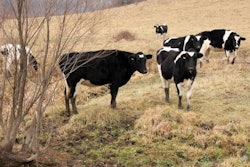
Latest forecasts for the prospects for the agrifood sector in the European Union (EU) highlight that societal demands will be a key driver in the development of the sector over the next decade.
Affordability, sustainability and convenience will be the main factors driving developments in the EU food market between now and 2030, according to the latest outlook from the European Commission (EC).
The report — EU agricultural outlook 2019-2030 — was published by the EC last week.
African swine fever continues to drive global meat market
The EC expects African swine fever (ASF) to continue to drive global meat markets for some time to come. While a range of factors create uncertainties in the markets in the long term, exports of pork from the EU to China will reduce the availability of this meat in European markets. EC says this could contribute to a decline in pig meat consumption in the region.
EU meat consumption is forecast to decrease by as much as 1 kg per head to less than 69 kg by 2030. Factors driving this reduction are linked to societal changes resulting from concerns over ethics, health and the environment.
Of all the meats, beef consumption may be particularly impacted, reflecting a decline in EU beef production of more than 9% by 2030. In contrast, per capita poultry meat consumption is forecast to reach 26.6 kg by 2030. Chicken production in the EU is expected to rise to 16.5 million metric tons (mmt). EC says European exports of pork to China could push up prices and reduce availability to the extent that consumption of this meat declines in the region over time.
Future milk production constrained by environmental concerns
Looking ahead to 2030, the EC expects that increasingly demanding sustainability requirements will hold back EU milk production. However, output is expected to rise from 168 mmt to 179 mmt by 2030. As herd numbers decline by as much as 1.4 million cows, farming practices are likely to adapt toward greater efficiencies and higher yields per animal. This would contribute to reducing emissions.
Driven by growing global demand and domestic industrial use, the EC expects as much as 24% more EU milk to be channeled into cheese production. Butter production is also forecast to rise. Domestic consumption of liquid milk will likely decline in the medium term.
EU grain, oilseed markets forecast to expand
Grain and oilseed markets in the EU are driven mainly by animal feed use, according to the EC. However, it expects industrial uses of these raw materials to increase faster than for livestock nutrition to 2030.
Further differentiation is expected to drive the European grain market. Total production in the region is forecast to rise to 320 mmt by 2030 from this year’s figure of 312 mmt. The greatest increase will likely be in the Black Sea region.
EC forecasts strong growth in the output of protein crops, driven by strong demand from the food and feed sectors. While production in 2019 was an estimated 3.9 mmt, this could be as high as 6.3 mmt at the end of the forecast period.
Overall, the area growing oilseeds is forecast to reduce slightly over the next decade, while production will remain stable at about 32 mmt. The EC expects soybean acreage to increase significantly. The decline in rapeseed is forecast to continue.
Driven by health concerns, a gradual decline in sugar consumption in the EU is forecast by the EC. The area given over to sugar beet is expected to be stable, while production could rise to 18.3 mmt by 2030.
Output of compound feed in the EU declined by almost 1% in 2019 compared to the previous year. According to the feed manufacturers’ association, FEFAC, production of poultry feeds increased, while those for pigs and cattle declined from 2018. Stable production is forecast for 2020.















